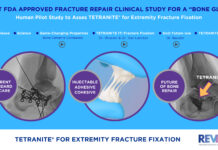LEXINGTON, Mass.– CBSET Inc., a not-for-profit translational research institute dedicated to biomedical research, education, and advancement of medical technologies, announced today the publication of its seminal preclinical research “Morphometric analysis of the human common hepatic artery (CHA) reveals a rich and accessible target for sympathetic liver denervation” in Scientific Reports.
“While promising transformative interventional alternatives to chronic medication, the development of neuromodulation therapies has been hampered by procedural variability and variation arising from complexities in the target microanatomy,” said Felix Mahfoud, MD, Internal Medicine, Saarland University, Homburg/Saar, Germany, and last author on the published study. “In order to aid in development of a novel hepatic denervation therapy for diabetes mellitus in particular, we conducted a digital morphometric analysis of the tissue surrounding human common hepatic arteries, providing the basis for the development of dedicated technologies and techniques to organ specific denervation.”
“To provide guidance for both efficacy and safety, we utilized an approach involving a combination of classical gross anatomy and histopathology with immunostaining and image analysis,” said John Keating, DVM, DACVP, co-author and Director of Pathology at CBSET. “This allowed us to accurately map the nerves surrounding the common hepatic artery and also demonstrate the spatial distribution of surrounding organs and structures of interest, such as the pancreas, lymph nodes, and blood vessels, that could shield the target nerves from treatment or could be susceptible to bystander treatment. Our data indicate that the common hepatic artery is not only a rich, but also an accessible target for sympathetic modulation by denervation regardless of sex and diabetic status, with efficacy and safety most optimally balanced within the proximal hepatic artery.”
“This study leveraged our deep experience in preclinical evaluation of denervation therapies and could not have been performed in a timely manner without the digital morphometry techniques we developed in-house. We remain excited about the potential of neuromodulation technologies and are committed to supporting further innovation in this space,” explained Rami Tzafriri, PhD, lead author and Director of Research and Innovation at CBSET.






